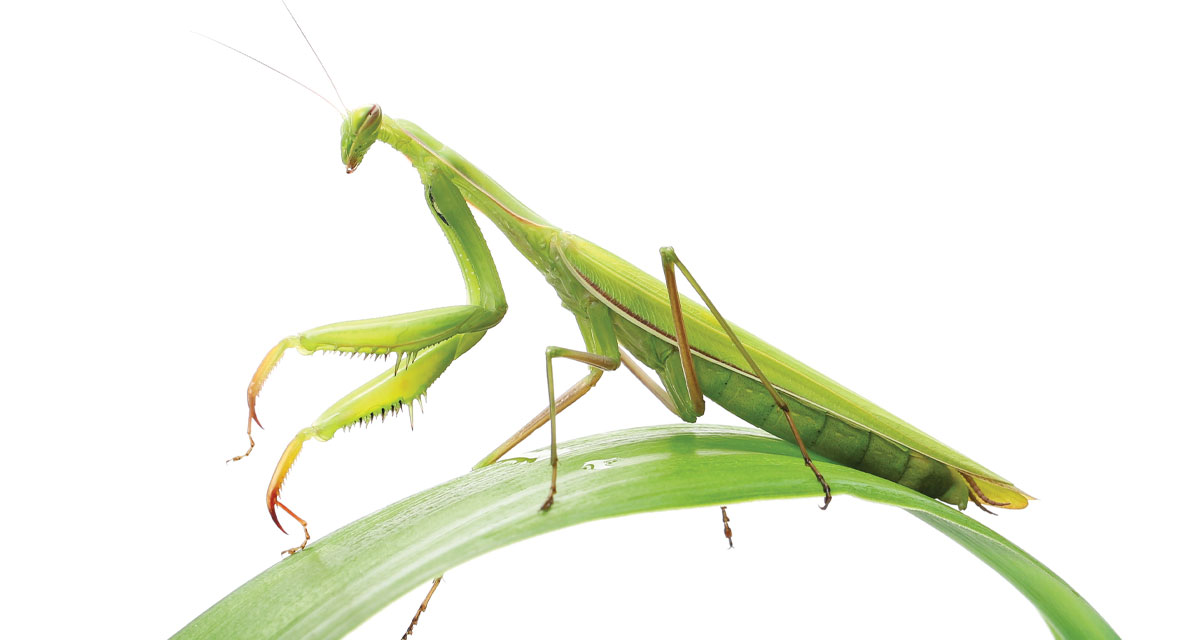With the existence of 5.5 million insect species, and 1.5 million families of beetles alone, the odds of an effective pest management program are low. It first requires an understanding of what lures the beneficial insects. Biological control is a viable, long-term solution to allow ladybugs, praying mantis, spiders, and ground beetles, for example, to prey upon pests that destroy gardens.
Braconid Wasp: Insects often carry parasites on their backs, if you look closely. There are about 1,700 species of stingless Braconid wasps flying around, and their particular gift is to inject their eggs into aphids, beetles, caterpillars, hornworms, moths, weevils, and worms as hosts. With long antennae and the body as large as its head, this wasp can be confused with small flies. Consider growing nectar plants with small flowers to attract this wasp. Dill, parsley, and yarrow are perfect examples.
Dragonfly and Damselfly: Usually a sign of good luck, the dragonfly and damselfly are similar in body shape. The only difference is their size. Dragonflies, also known as the “devil’s darning needles,” possess toothed mandibles to consume larger prey such as ants, swarming termites, and beetles. Both, however, feed on mosquitoes, gnats, and flies. To welcome the beautiful fliers to your yard, consider building a water feature containing a clear surface area, vertical plants, and partial sunlight.
Ground Beetles: Under three centimeters in length, the beetle is dark in coloring with metallic hues of blue or green, red or copper. With three pairs of legs and two pairs of wings, it has prominent mandibles to consume a large variety of insects from ants to maggots, and slugs at night. Do not praise the ground beetle too highly, though; some species eat seeds, shoots, and the pollen of plants.
Ladybugs: The bright red flyer with black spots is a welcome sight. Its blood is a repellent to predators, such as aphids, whiteflies, and Colorado potato beetles. One way to attract the beetle is to utilize plants that have either flowers or leaves in umbrella shapes, such as cilantro, clover, coreopsis, dill, fennel, geraniums, tansy, and yarrow. While it’s an extra effort, spray the leaves of the plants to attract the ladybugs. By morning, you’ll have fewer aphids.
Distinguish Tip: If you see a shiny version of a ladybug in red, orange, brown, or tan coloring with black spots, it is an invasive species called the Asian Multicolored Lady Beetle. It has lessened our population of ladybugs. Be careful, it can bite and release a pungent odor.
Praying Mantis: The large-bodied, green insect is an extreme predator against aphids, beetles, caterpillars, crickets, grasshoppers, and mosquitoes by day, and moths by night. Its camouflage conceals its location nestled in tall grasses or shrubs; yet, it likes dill, or cosmos and marigold flowers. Be wary of placing hummingbird feeders near your garden; the praying mantis will catch them, along with other winged insects, with ease.
Spiders: Running into a spider web is usually not a favorite pastime; however, the appearance of webs in your garden only benefits your plants, fruits, and vegetables. The spider is a hero in consuming the insects lured to your tomatoes. In addition to feasting on mosquitoes, arachnids eliminate aphids, cockroaches, fruit flies, and grasshoppers.
Chemical Spray or Powder Warning
The label of a popular pesticide may suggest it kills “more than 65 types” of insects; however, before purchasing, it is vital to learn more about the main ingredient. For instance, “Carbaryl” is used in powders, liquid concentrates, granules, or baits. The chemical kills by attacking the nervous system through touch or consumption. The Environmental Protection Agency, EPA, and American universities arrived at the same results: exposure can cause nasal discharge, vomiting, severe convulsions, coma, and possibly death to humans, cats and dogs, rabbits, birds, and honeybees. Without researching “Sevin Dust,” shoppers may believe the label and spread it over trees, on gardens, and along fences without knowing the ramifications for the environment. Rather than buying a toxic chemical, use nature and natural means to resolve pesky problems!























